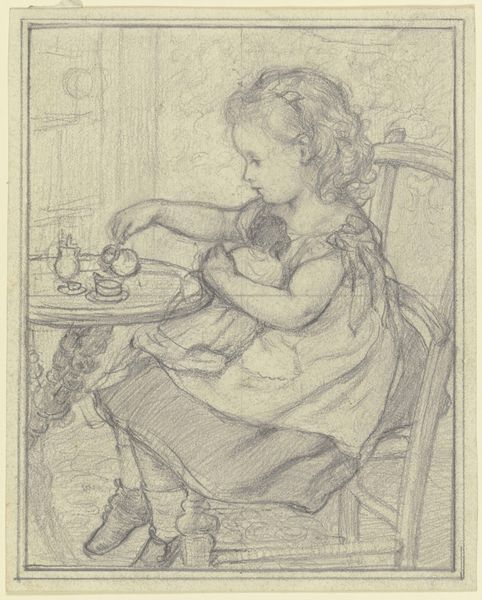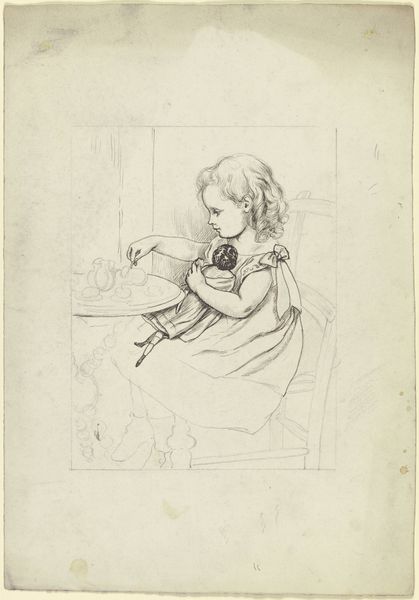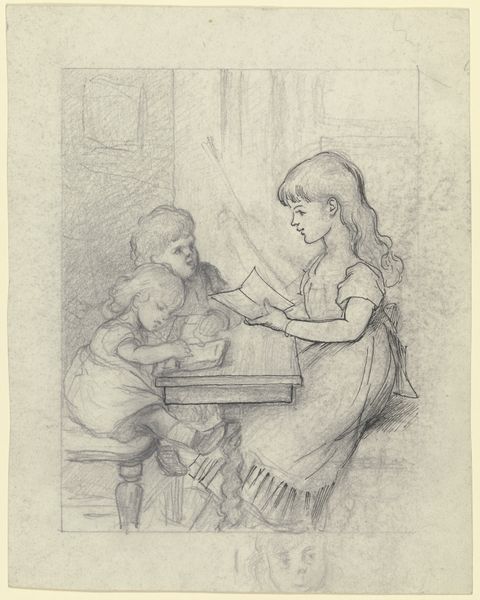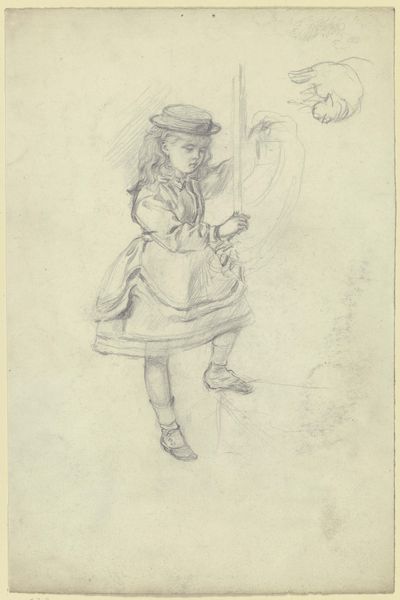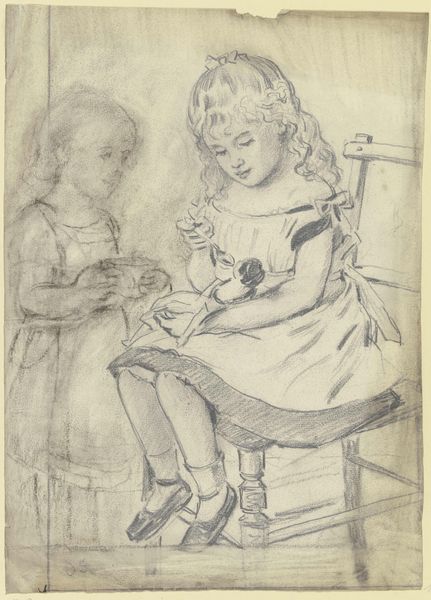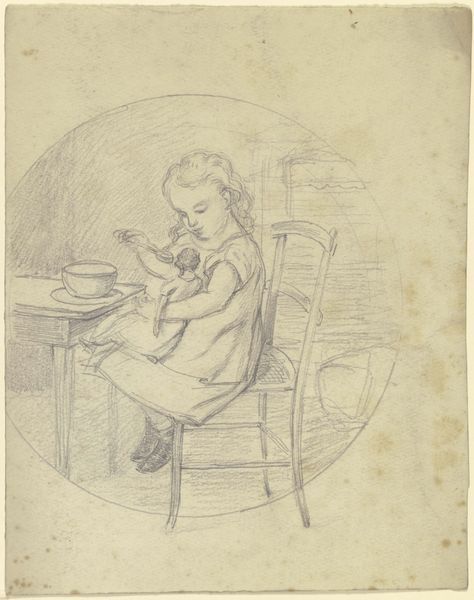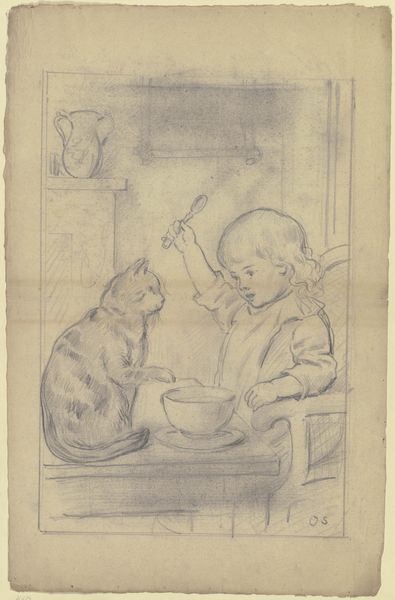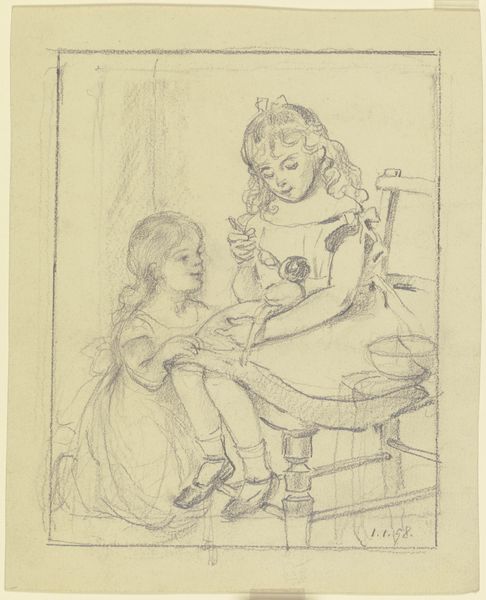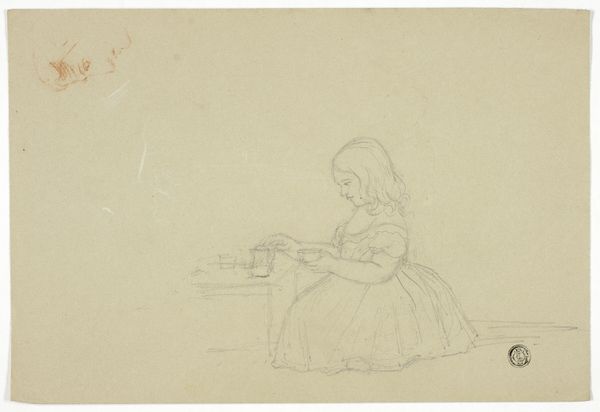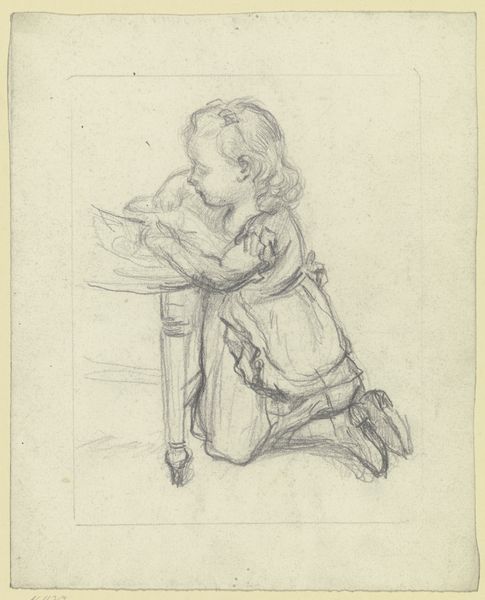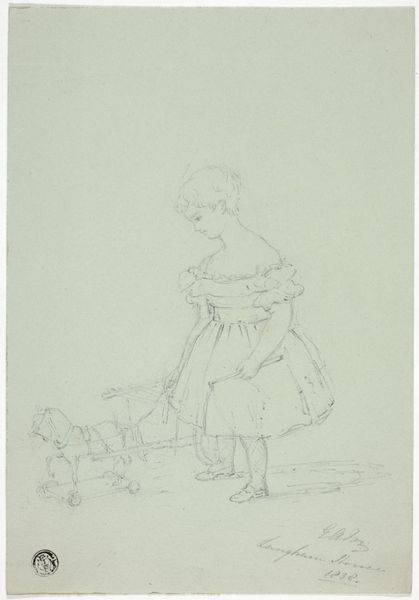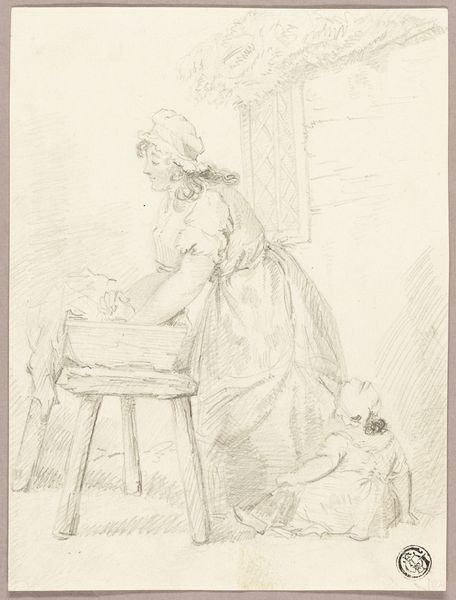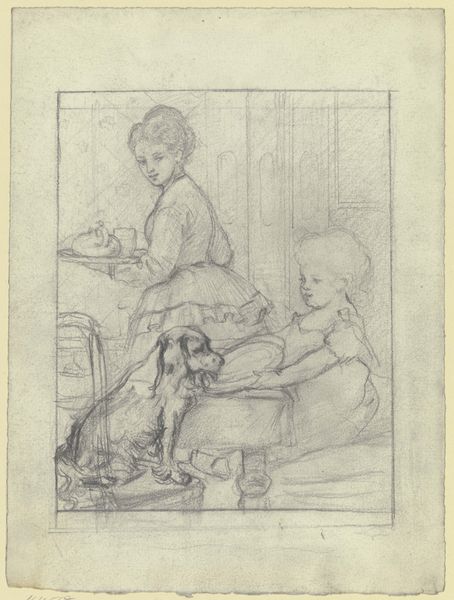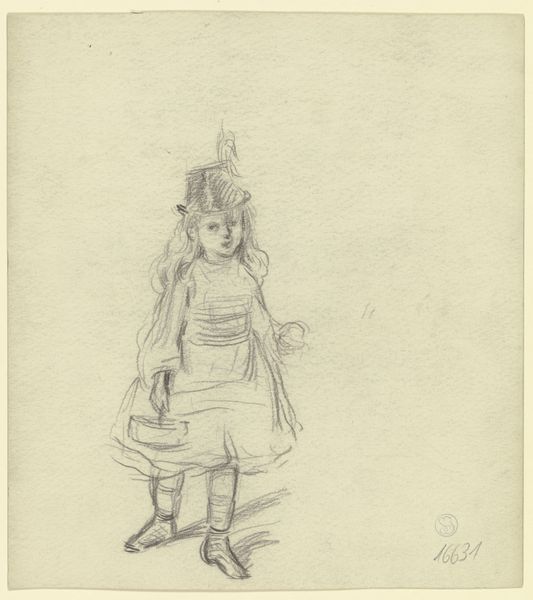
drawing, paper, ink, indian-ink
#
drawing
#
toned paper
#
light pencil work
#
16_19th-century
#
quirky sketch
#
pencil sketch
#
sketch book
#
paper
#
personal sketchbook
#
ink
#
german
#
indian-ink
#
pen-ink sketch
#
sketchbook drawing
#
storyboard and sketchbook work
#
sketchbook art
Copyright: Public Domain
Editor: This is Otto Scholderer's "Girl Watering Flowers," a drawing from around 1872-1874 currently held in the Städel Museum. It feels very intimate, like a peek into a private moment. I'm curious, looking at it through a historical lens, what stands out to you? Curator: Well, it's interesting to consider this in the context of the late 19th century and the rise of Impressionism. What seems like a simple, private moment—a girl watering flowers—was becoming a popular subject. Why do you think artists were turning to these domestic scenes? Editor: Maybe there was a growing interest in the everyday lives of ordinary people, rather than grand historical narratives or portraits of the wealthy? Curator: Exactly. There's a democratizing aspect to it. But think about the institutions exhibiting this work. Did the art world readily embrace these scenes, or was there resistance? Whose stories were deemed worthy of artistic representation and museum display? This also relates to class, of course, as leisure time for things like tending plants, may only be enjoyed in some echelons of society. Editor: That's a great point. I hadn't considered the power dynamics inherent in choosing what to display. Curator: And what kind of ideal of girlhood is presented? Is she sentimentalized? Neutral? How might a museum choose to emphasize or deemphasize certain elements of the scene for audiences? Editor: Thinking about the art world's gatekeeping makes me view it completely differently now. It's more than just a pretty picture, it’s a snapshot of societal values at a specific moment. Curator: Precisely. It reflects what was considered worthy of artistic attention, and by whom. We must be cautious about readily embracing its supposed simplicity and question our institutions' role in circulating, promoting, and perpetuating ideals.
Comments
No comments
Be the first to comment and join the conversation on the ultimate creative platform.
